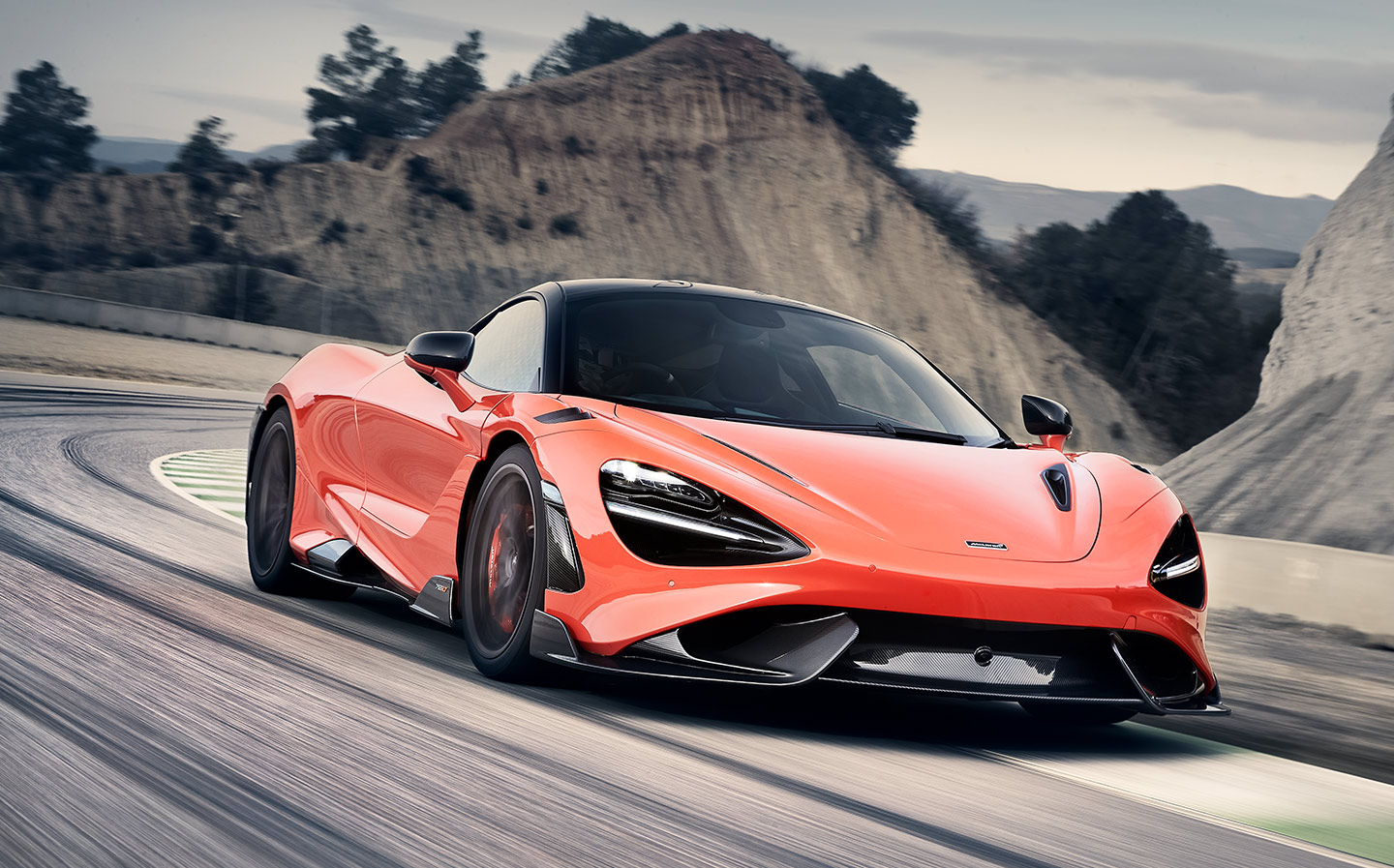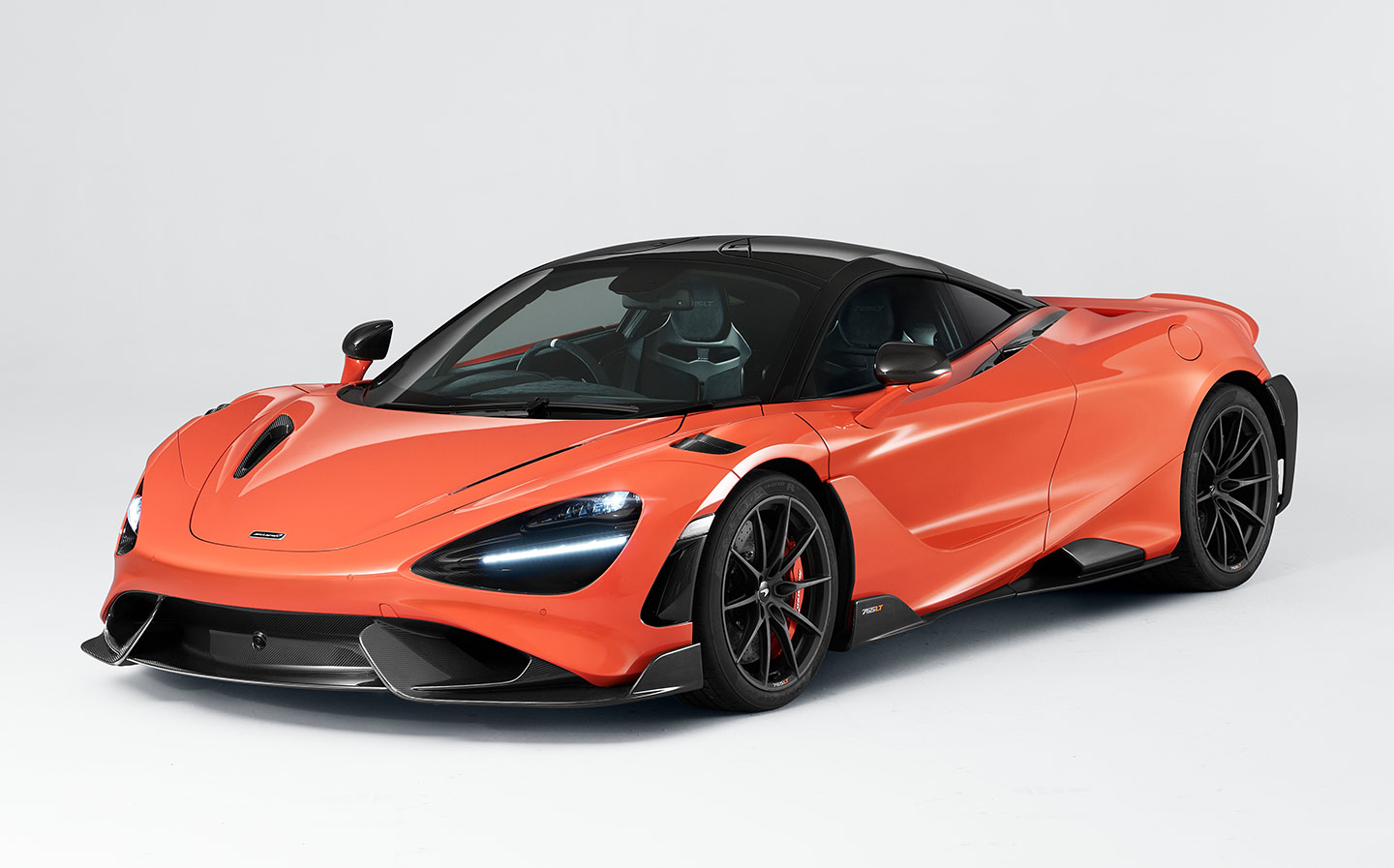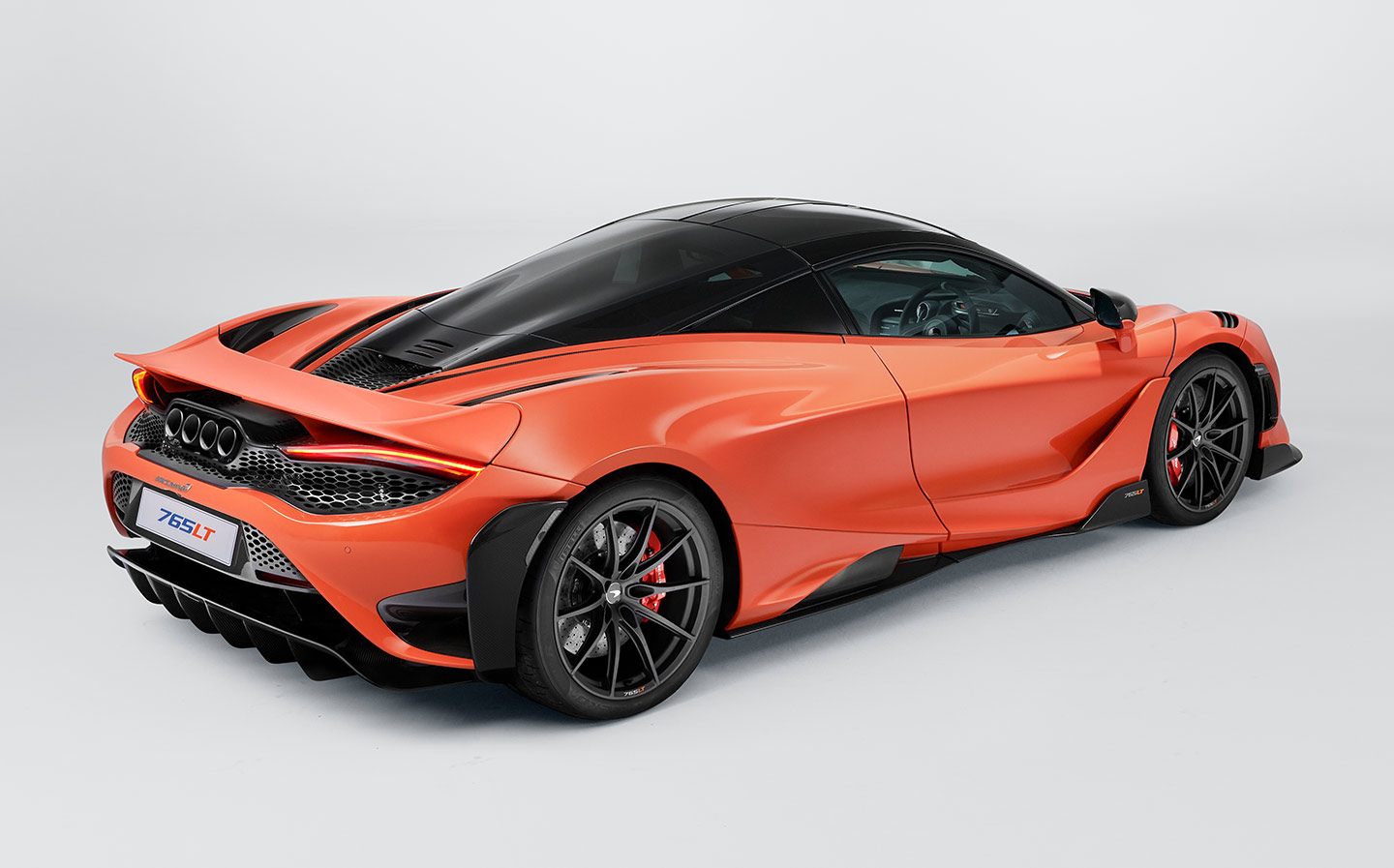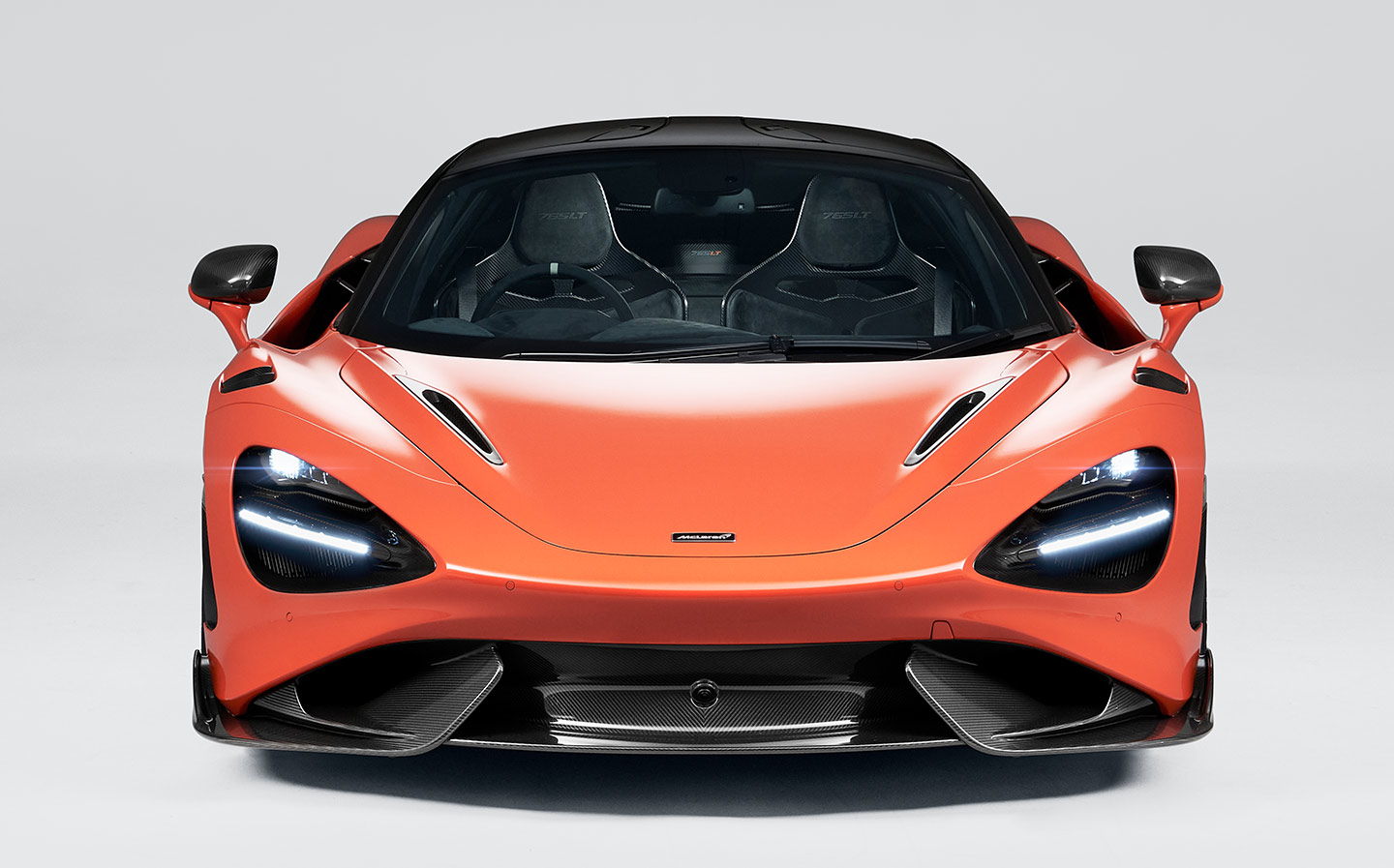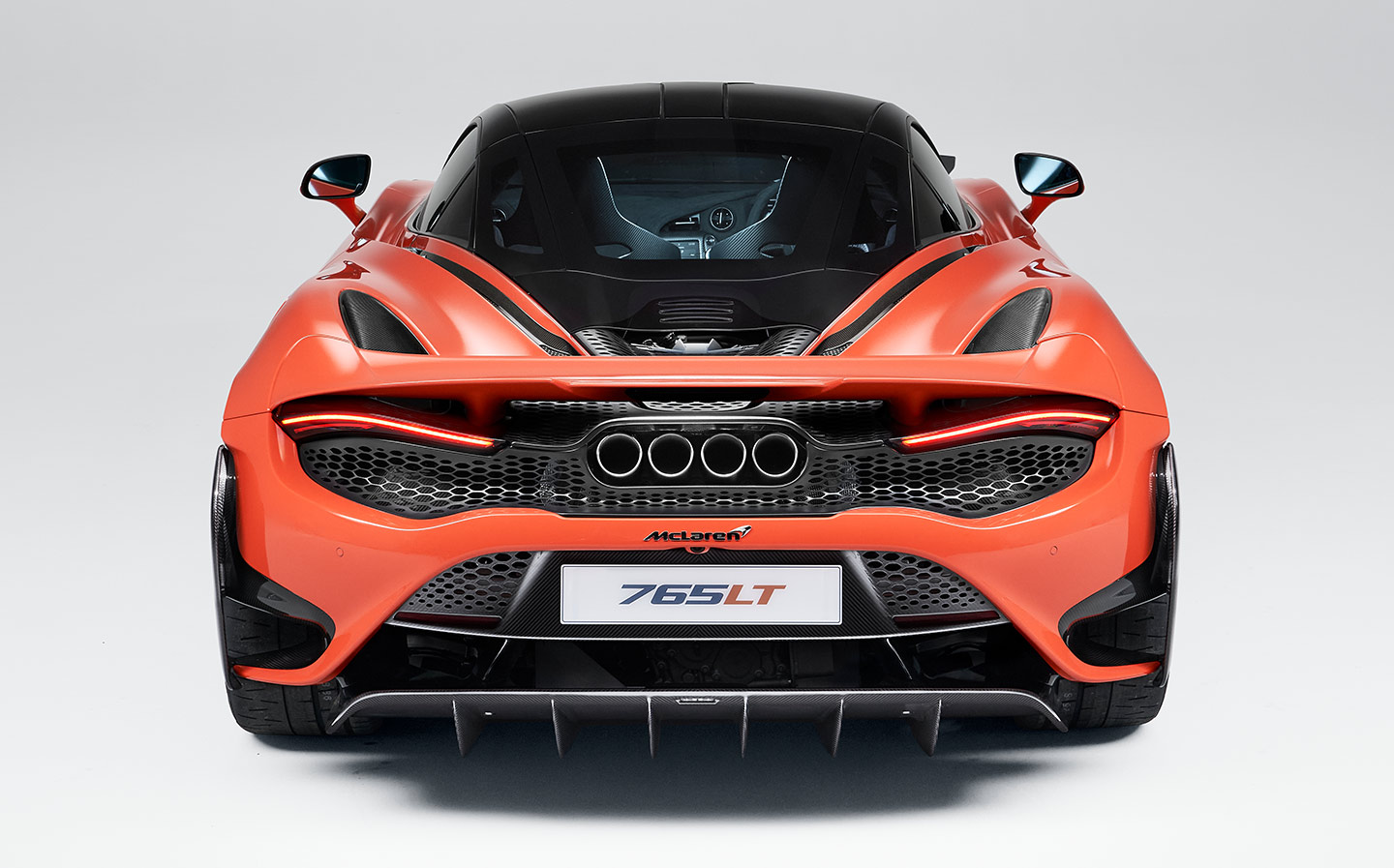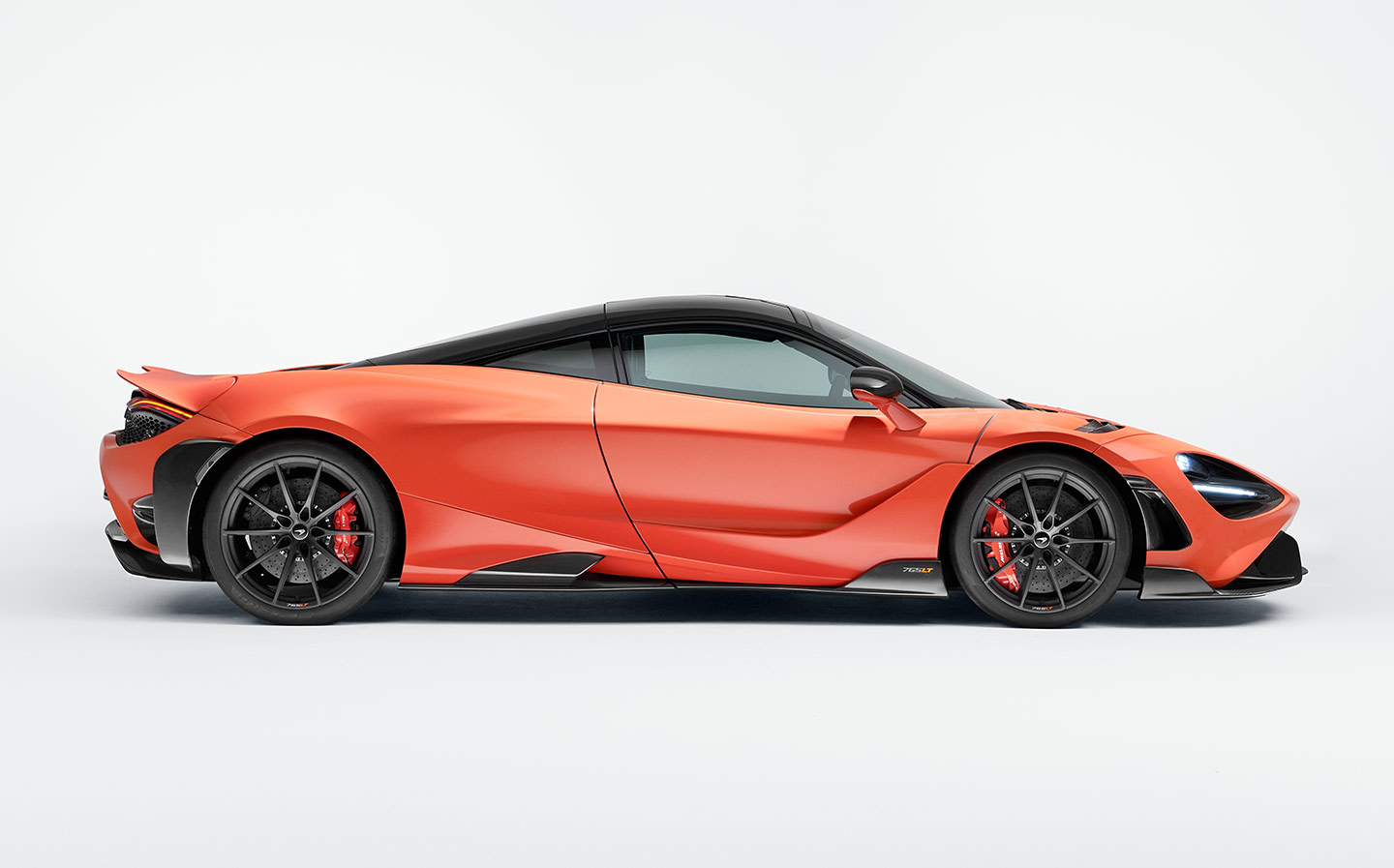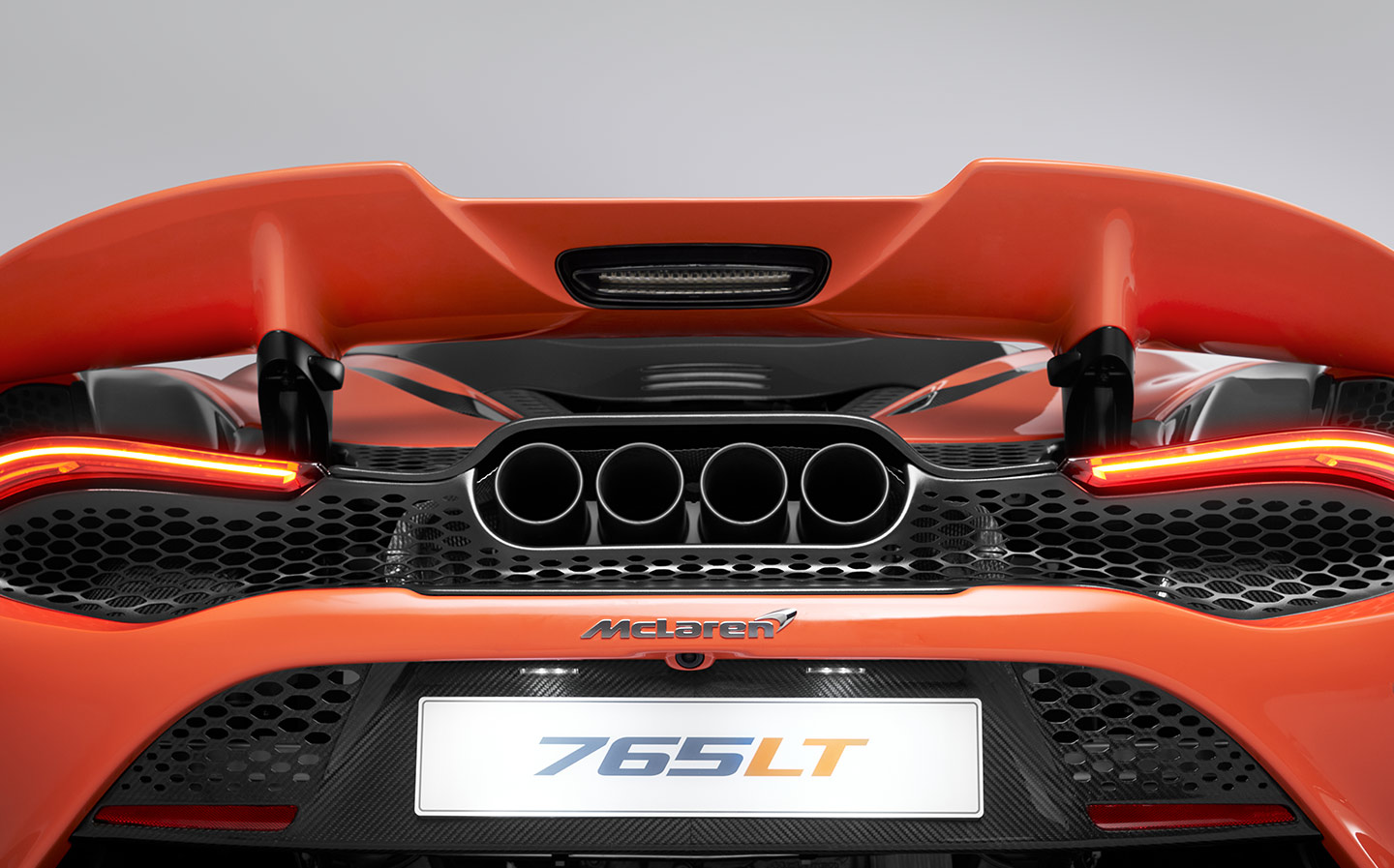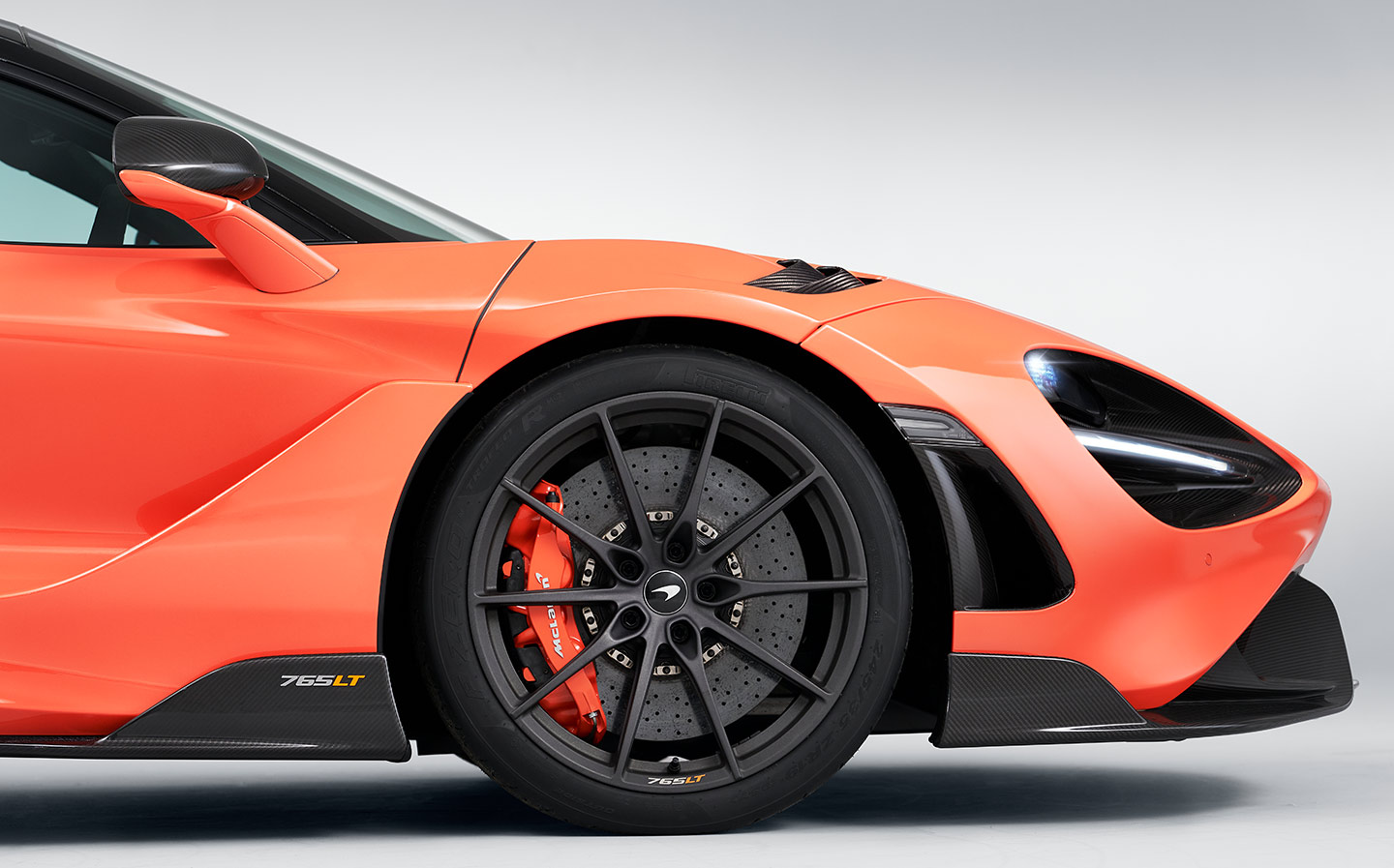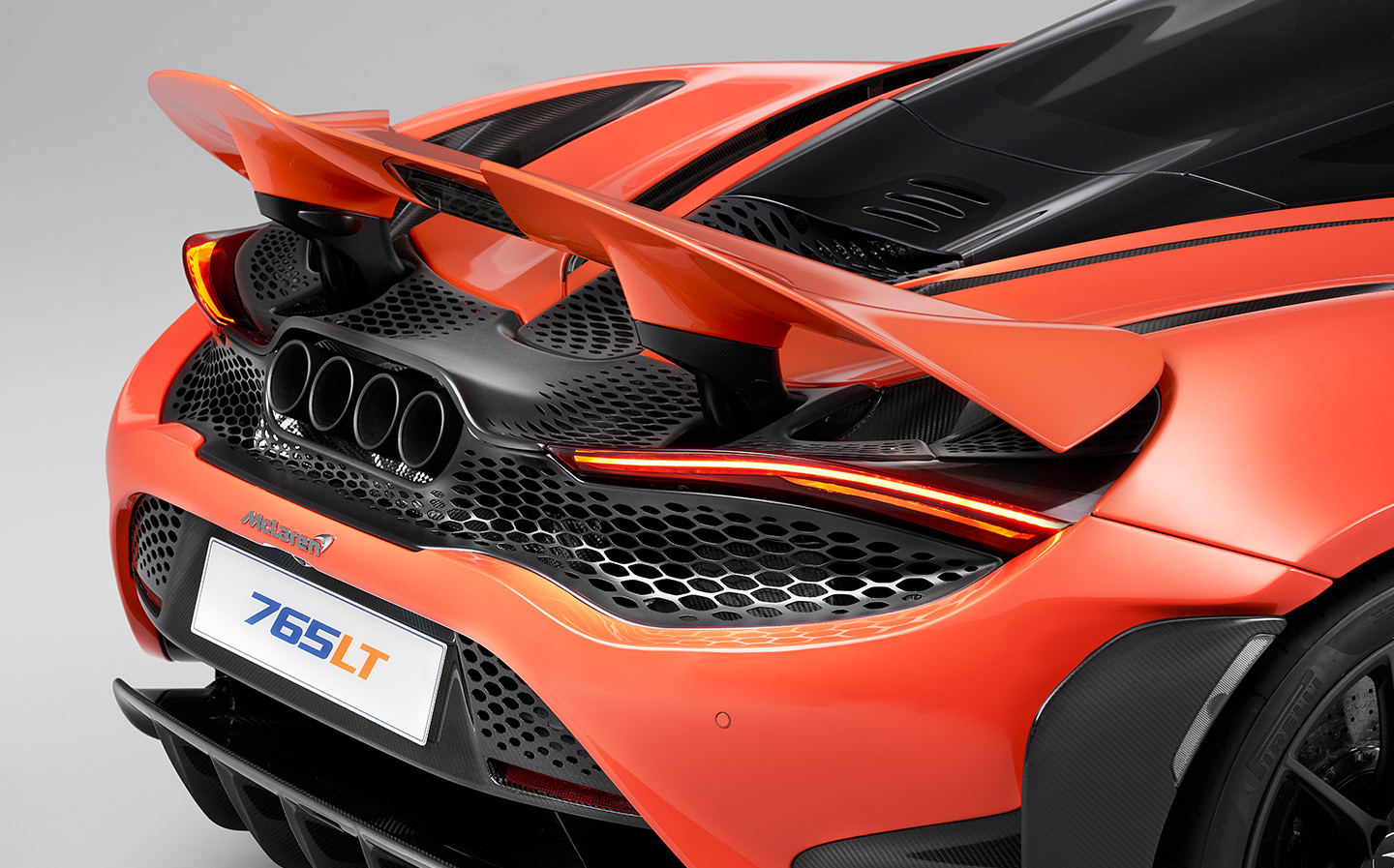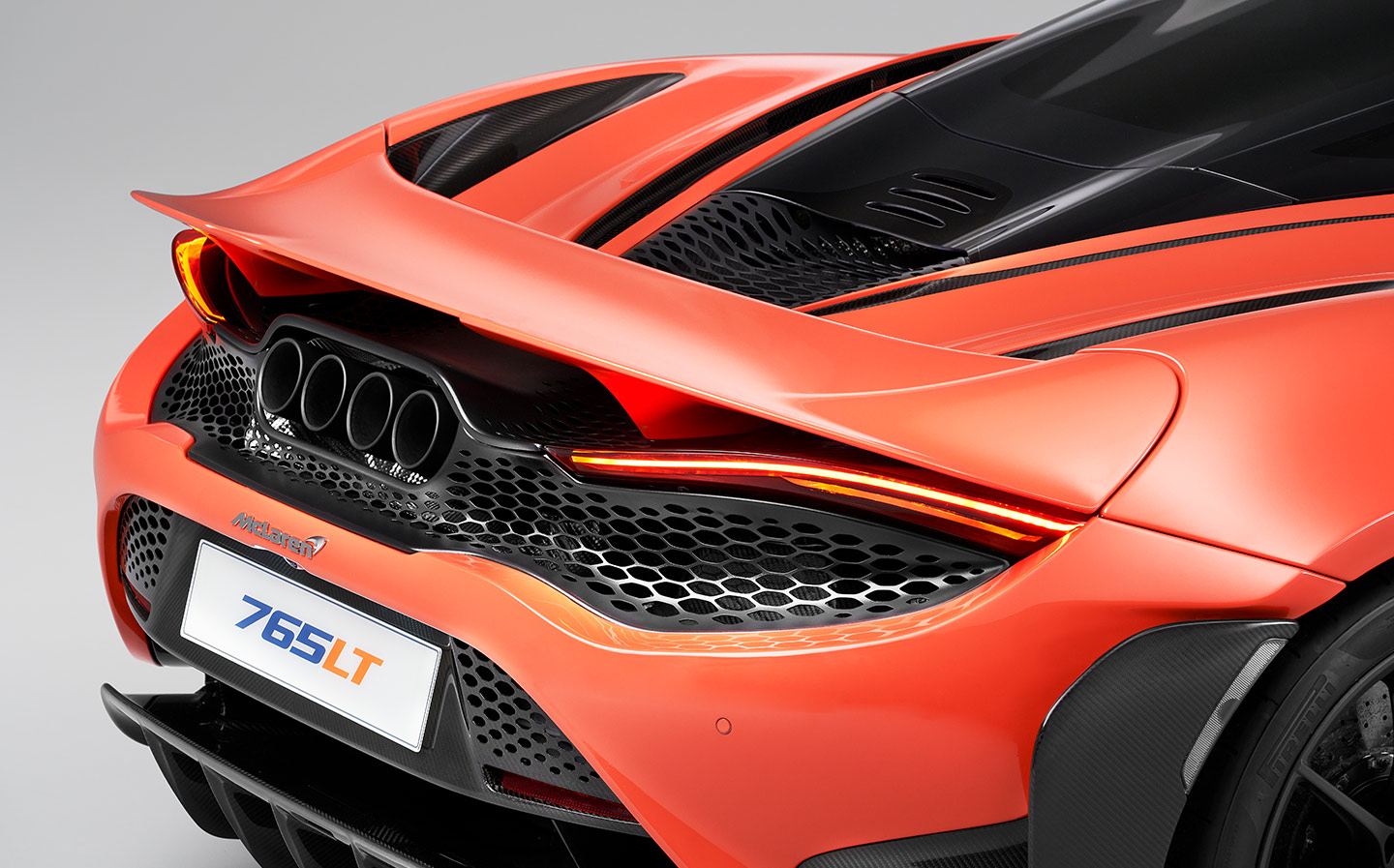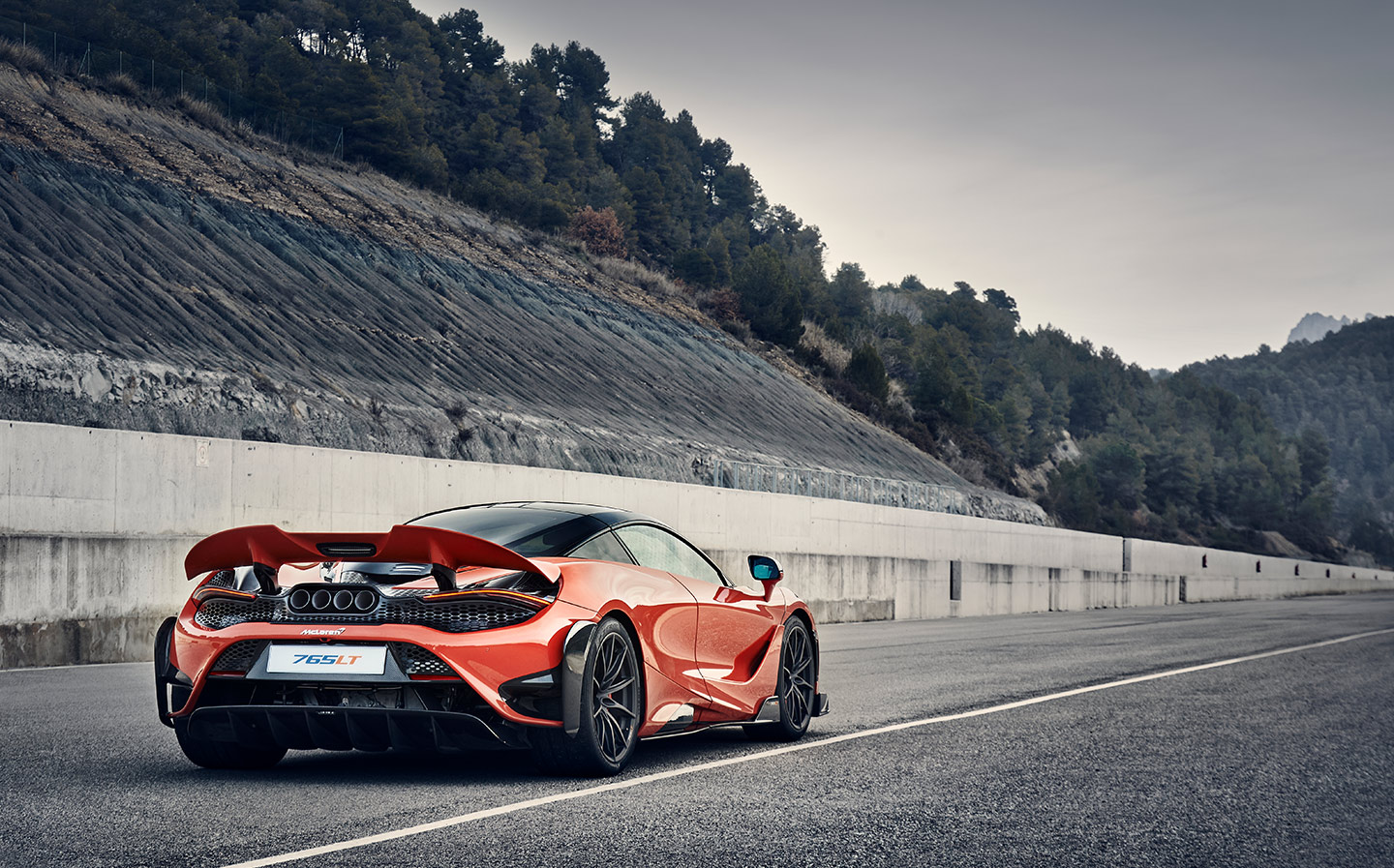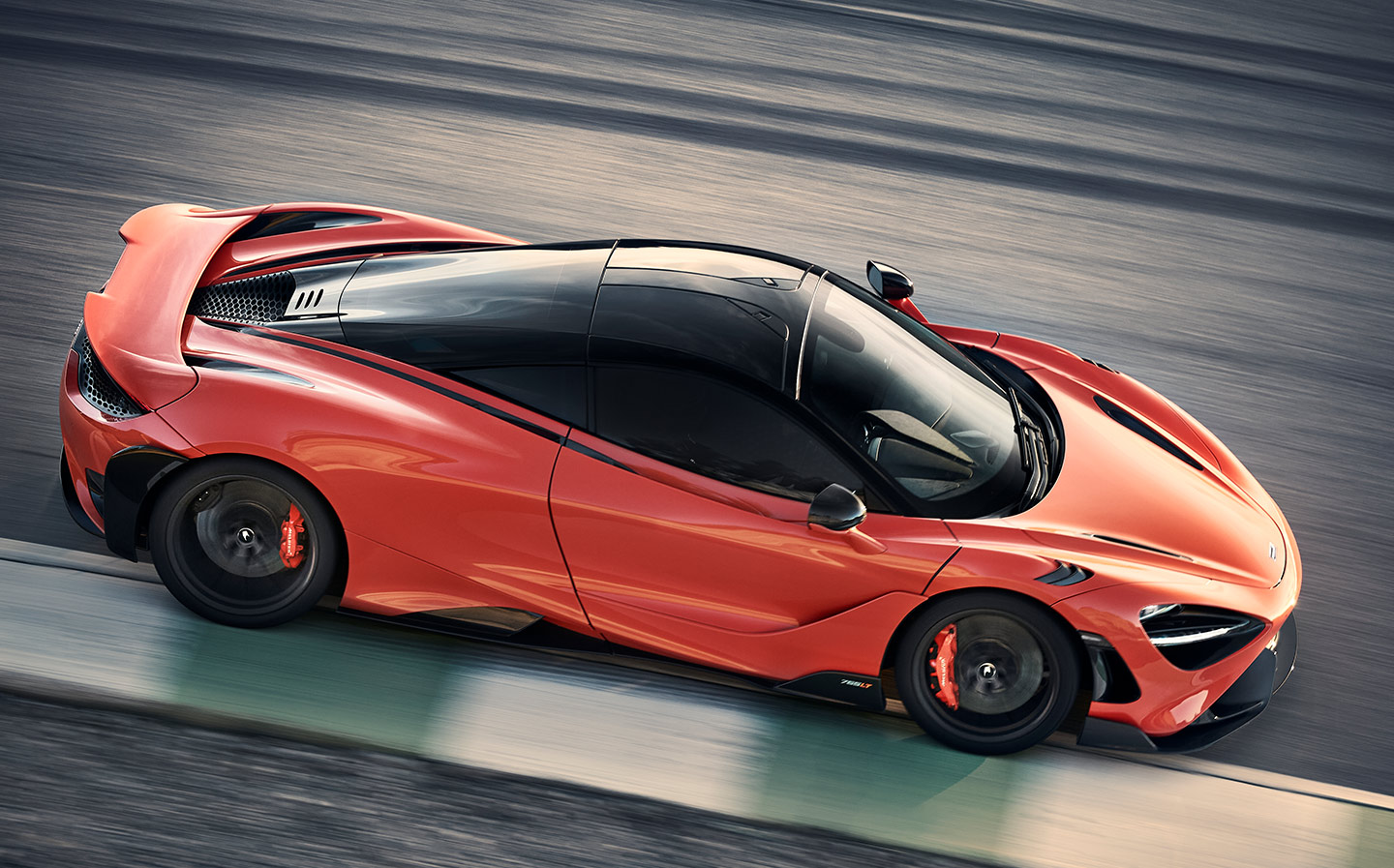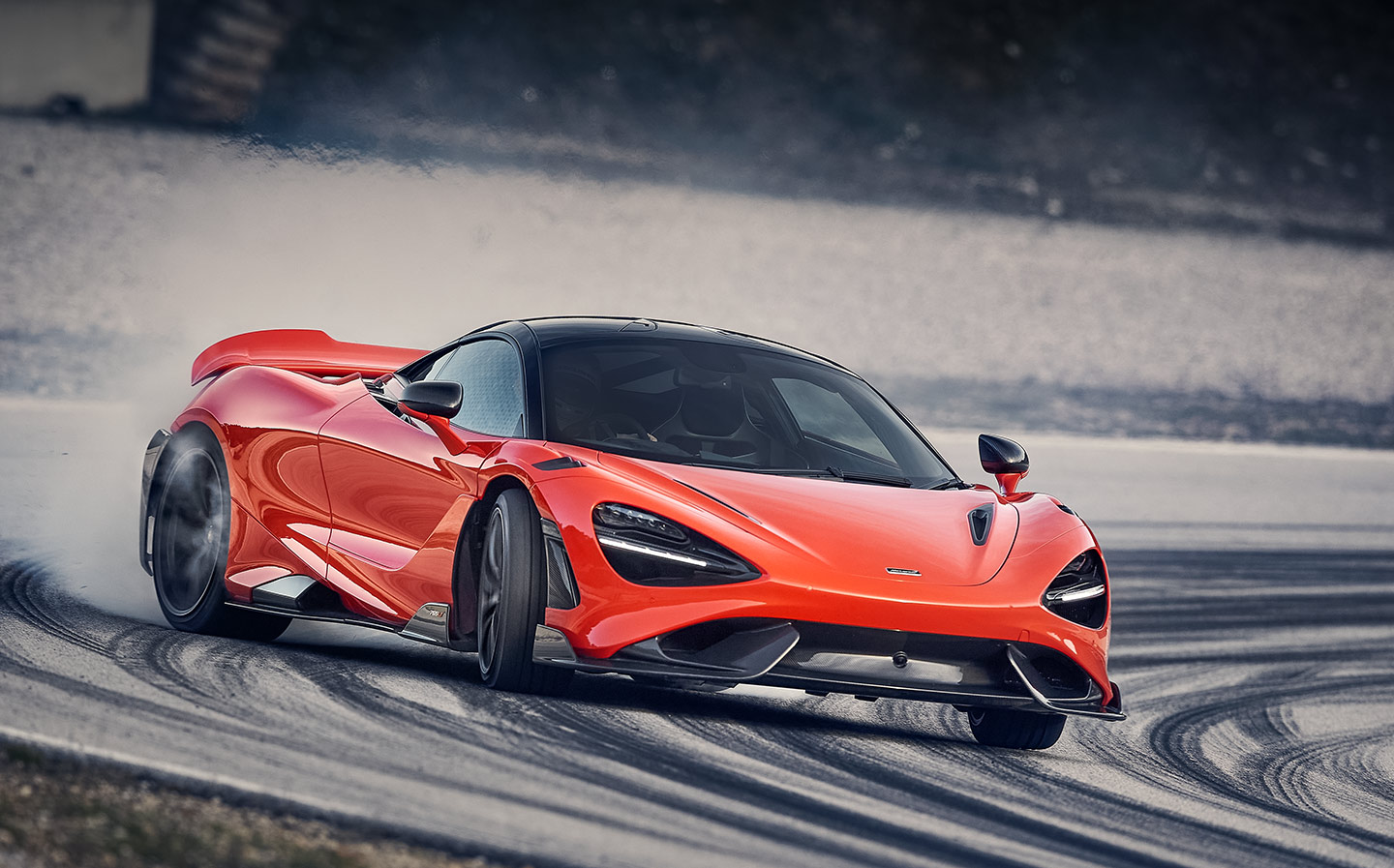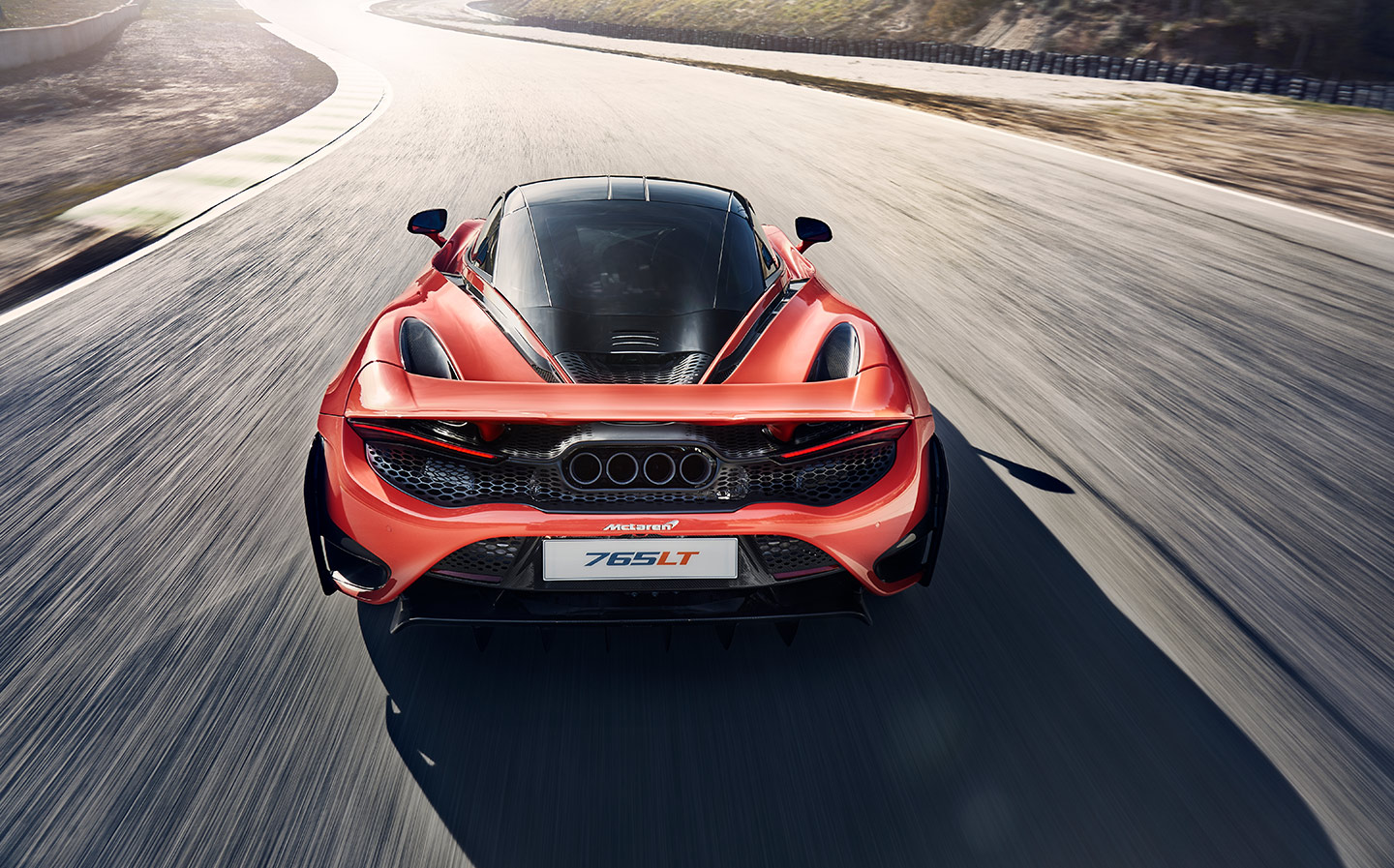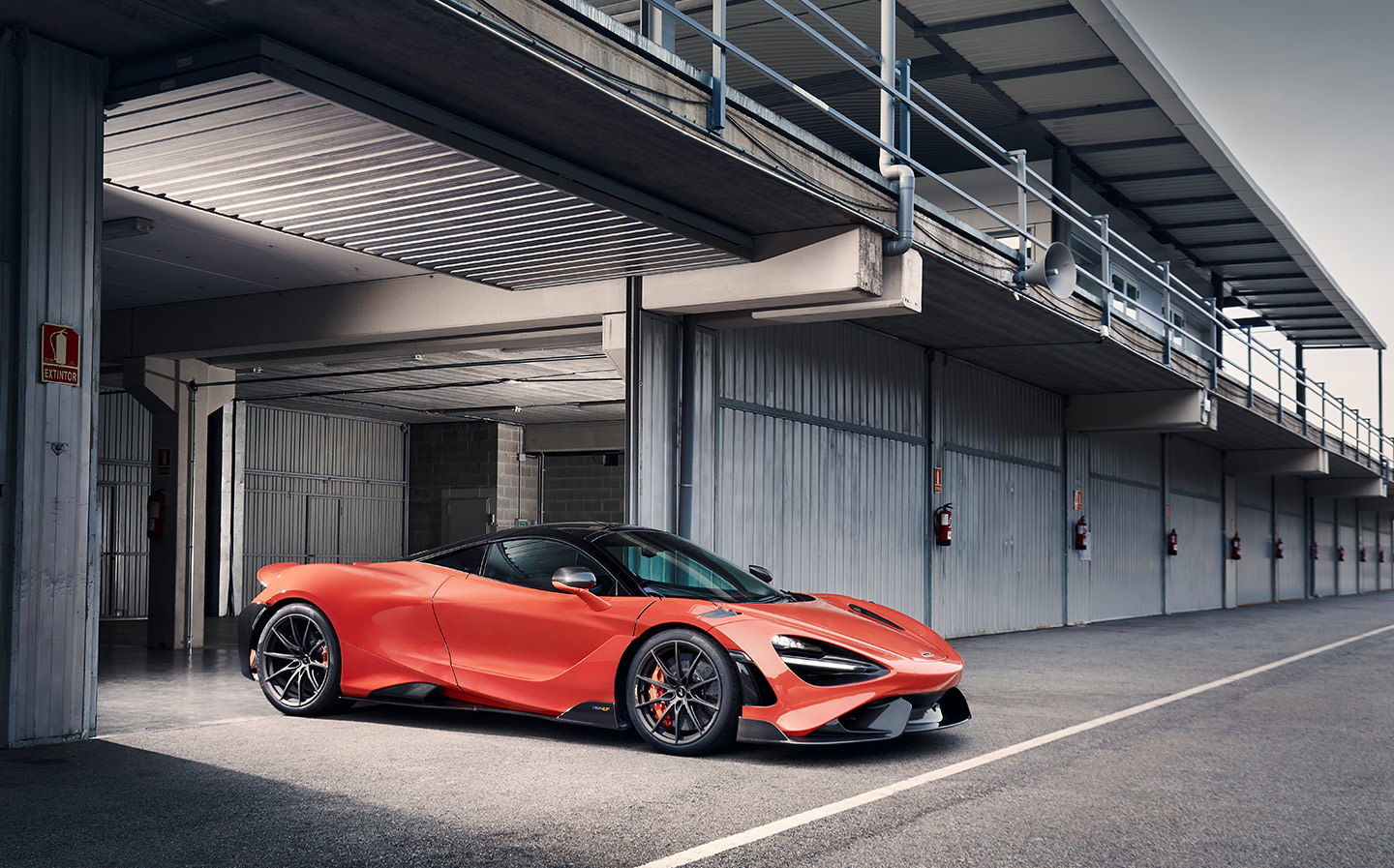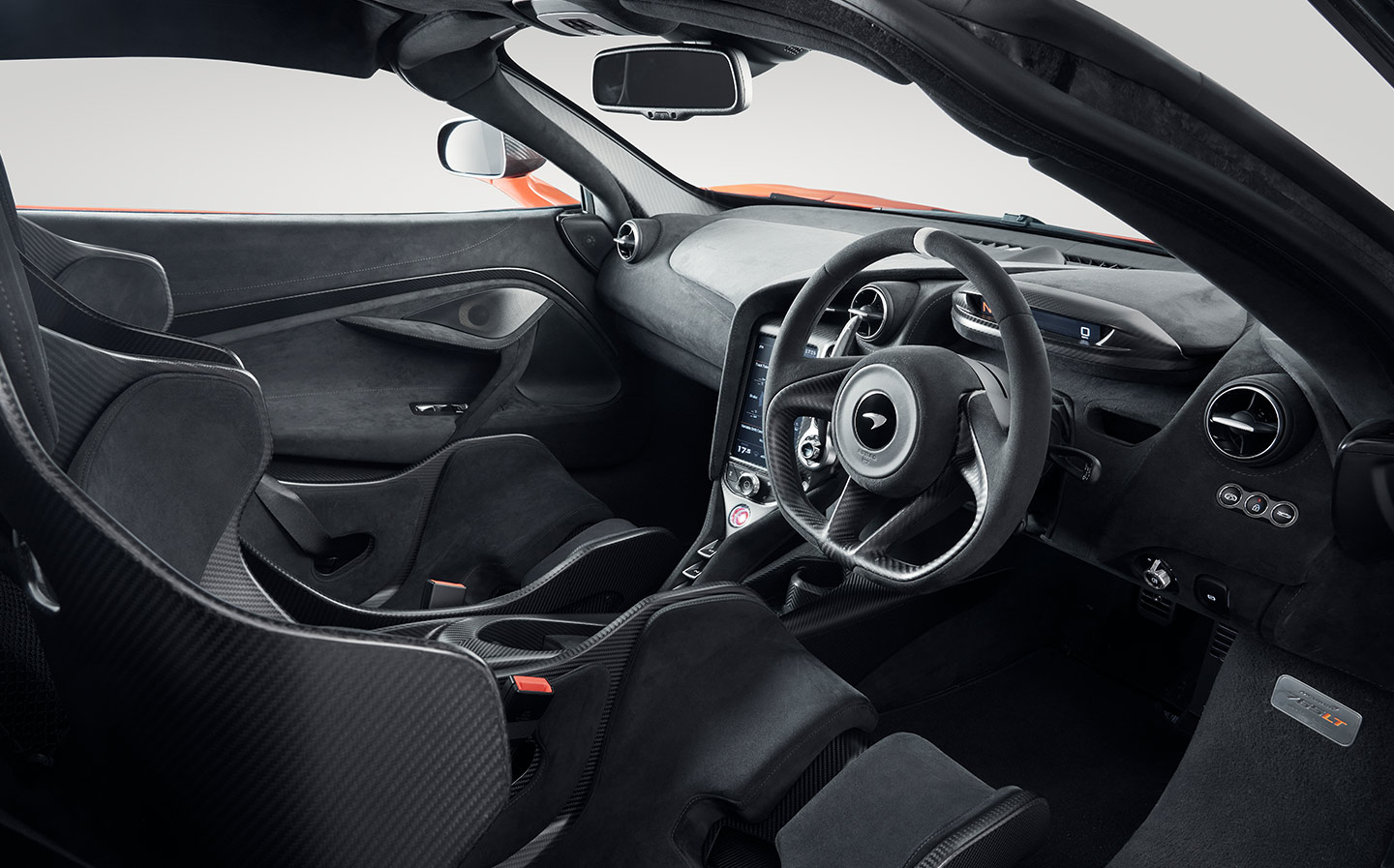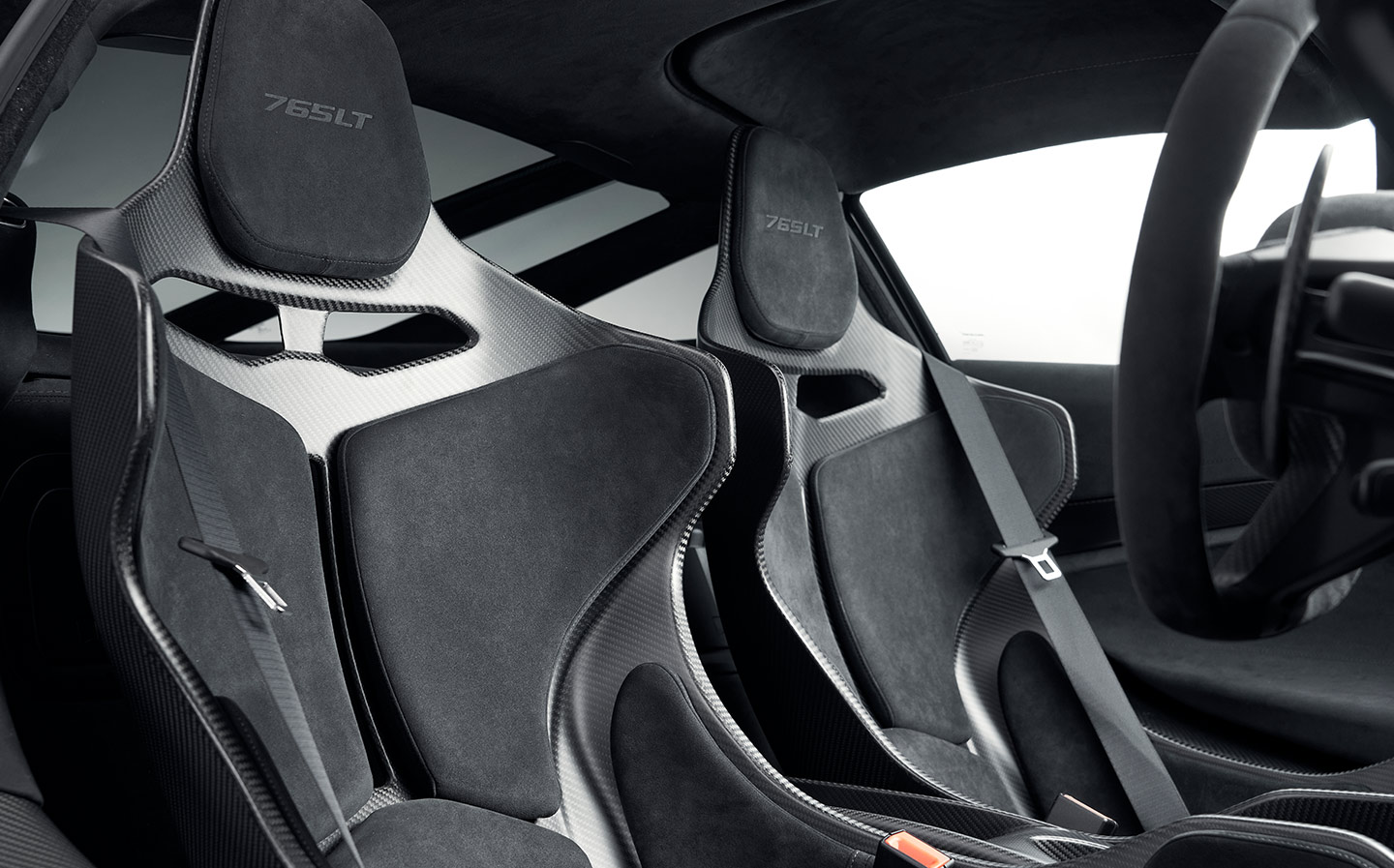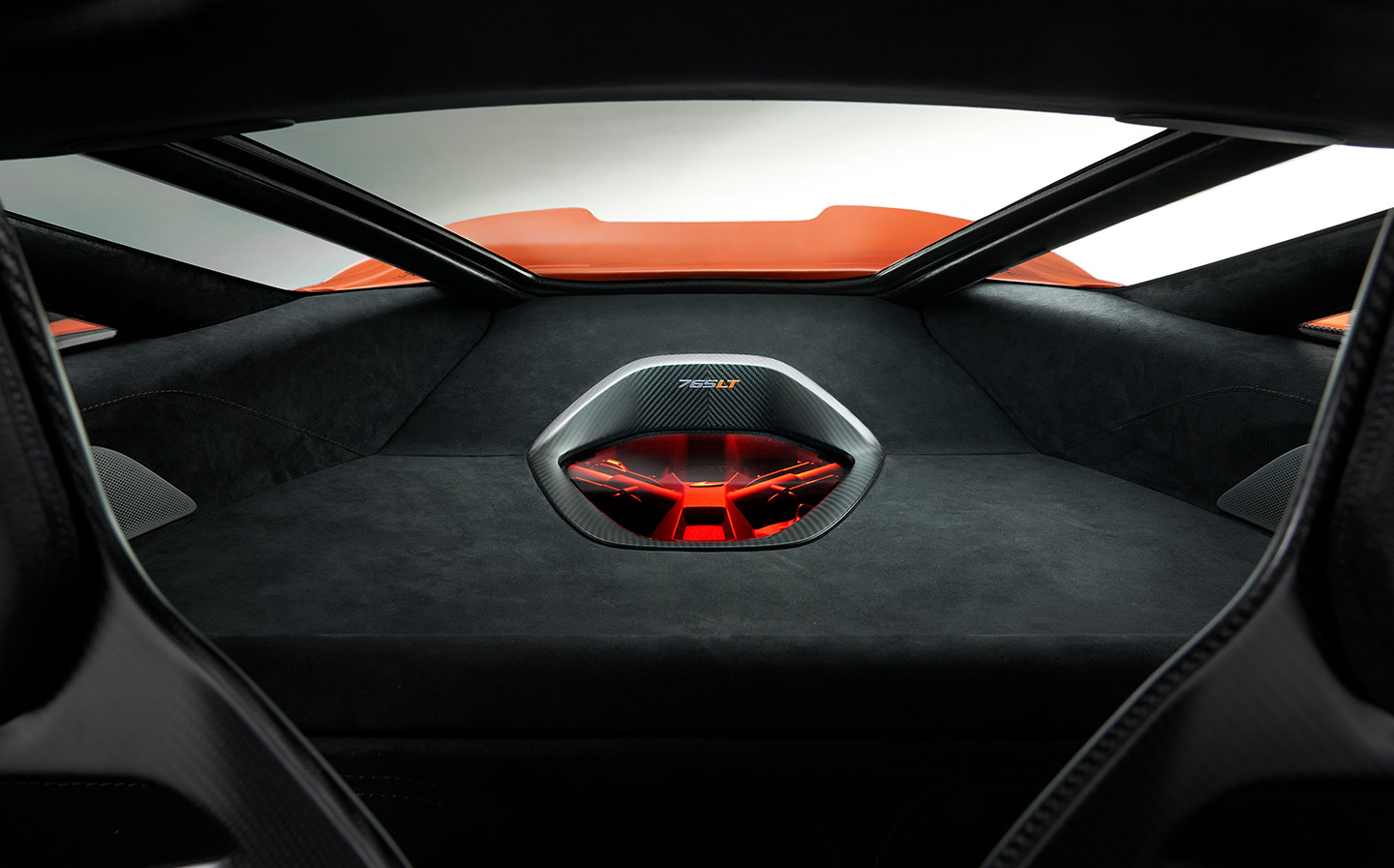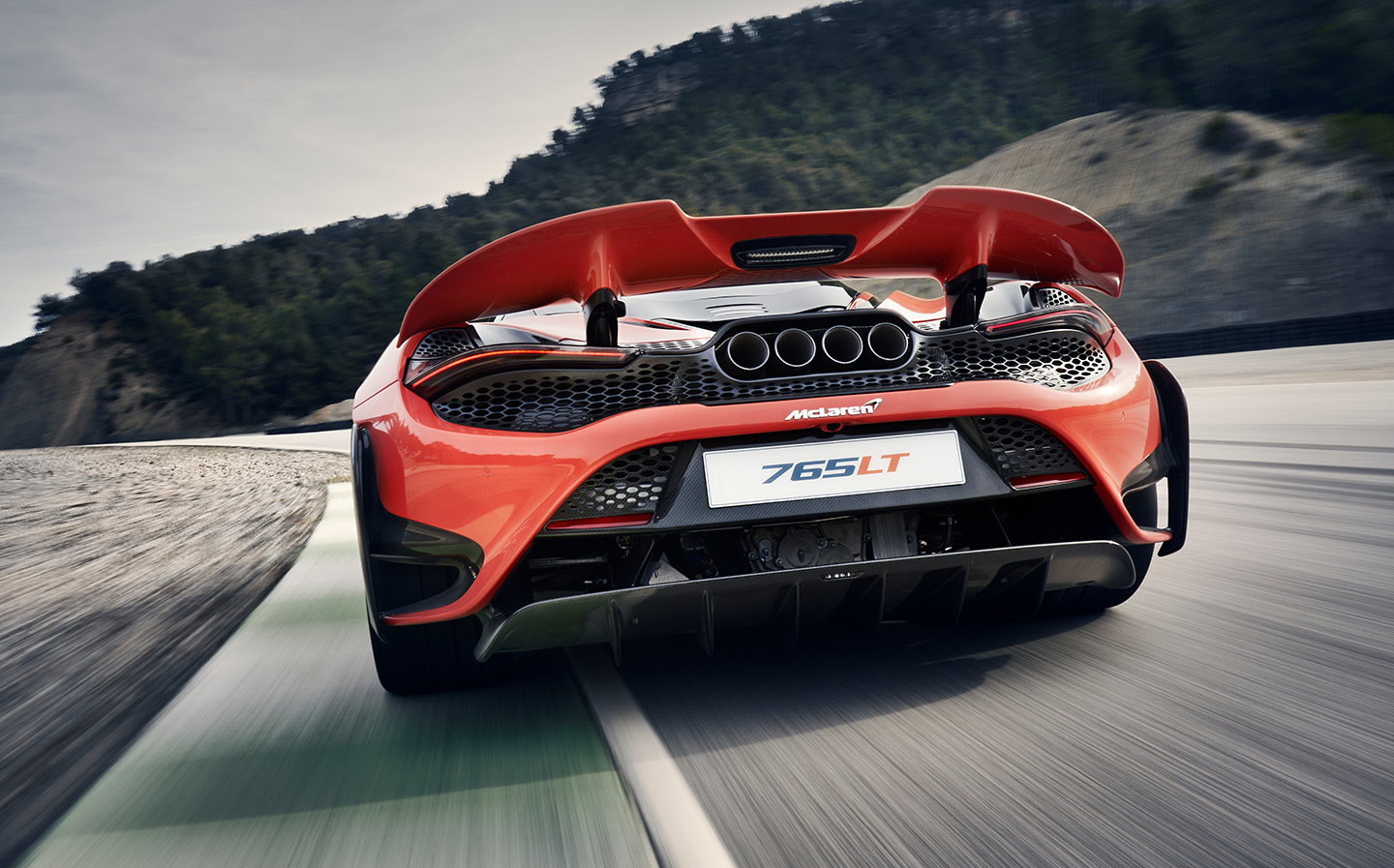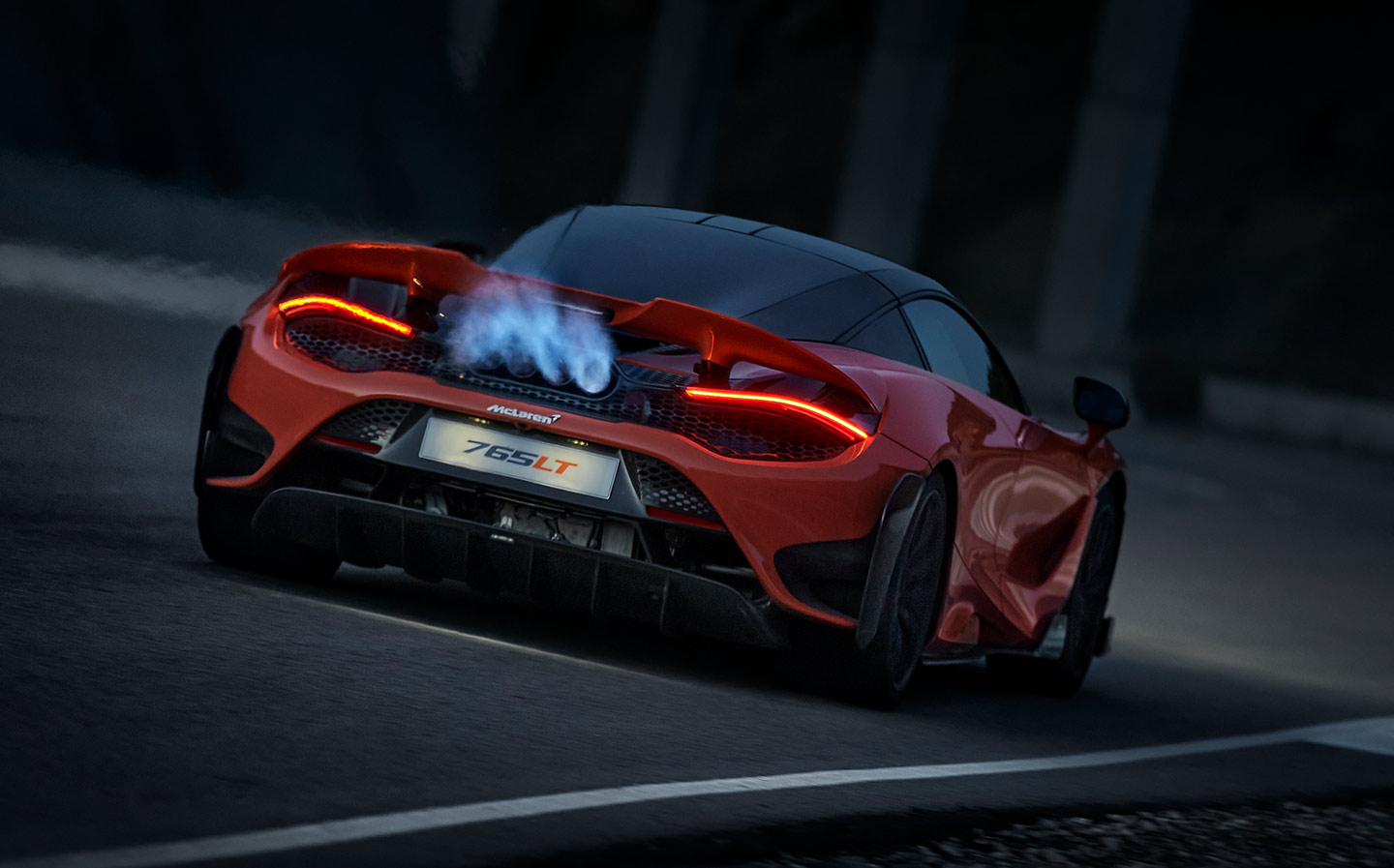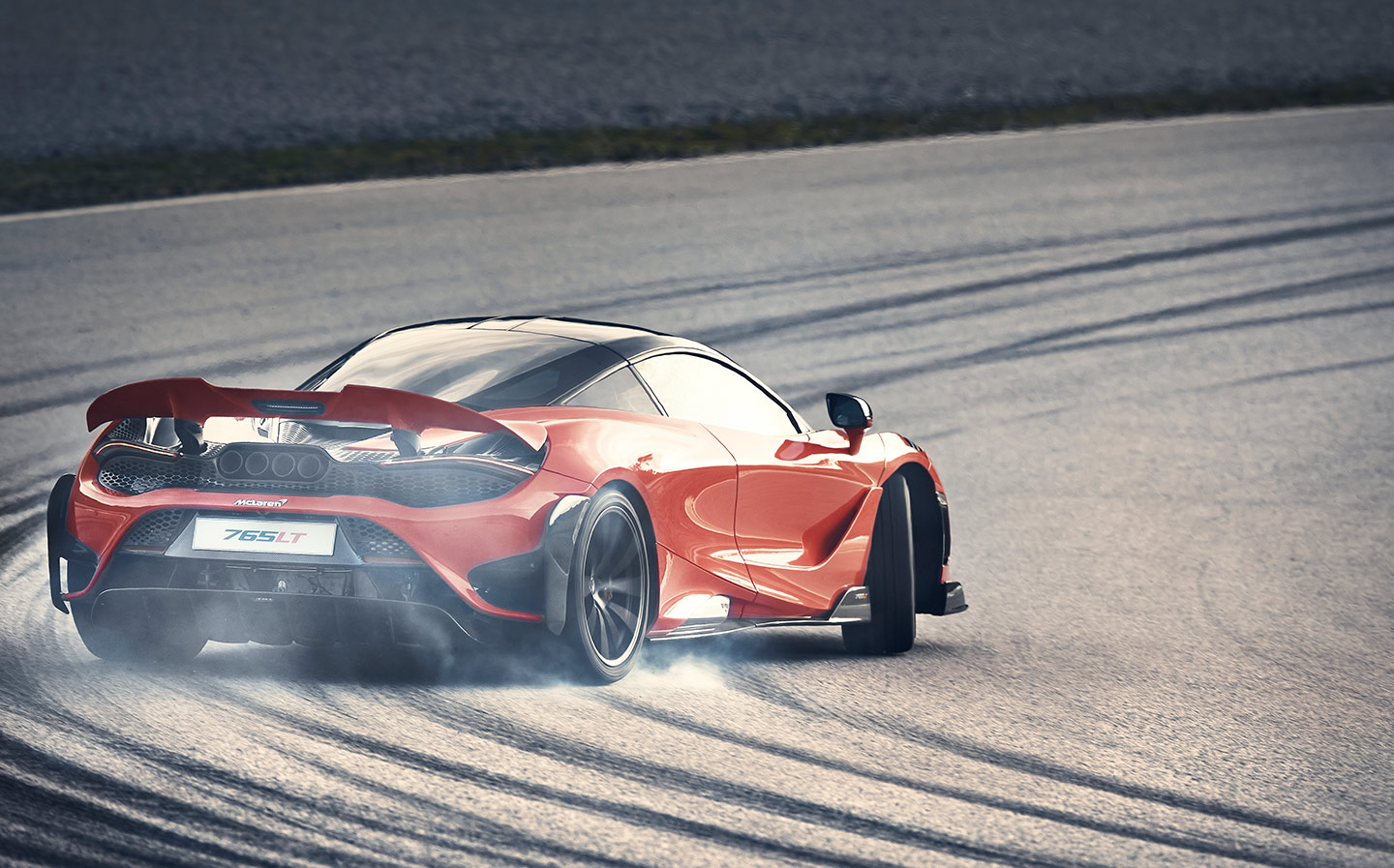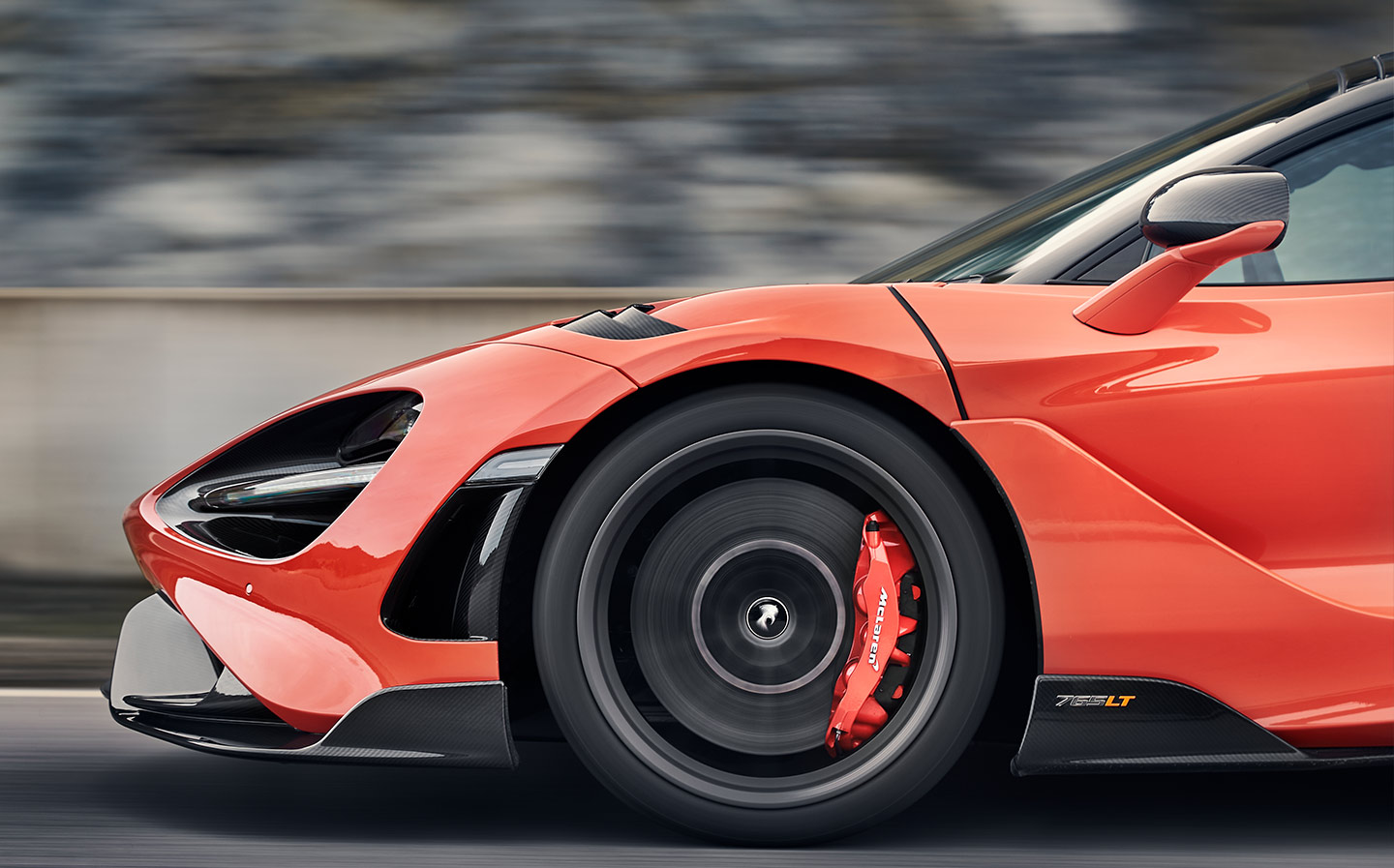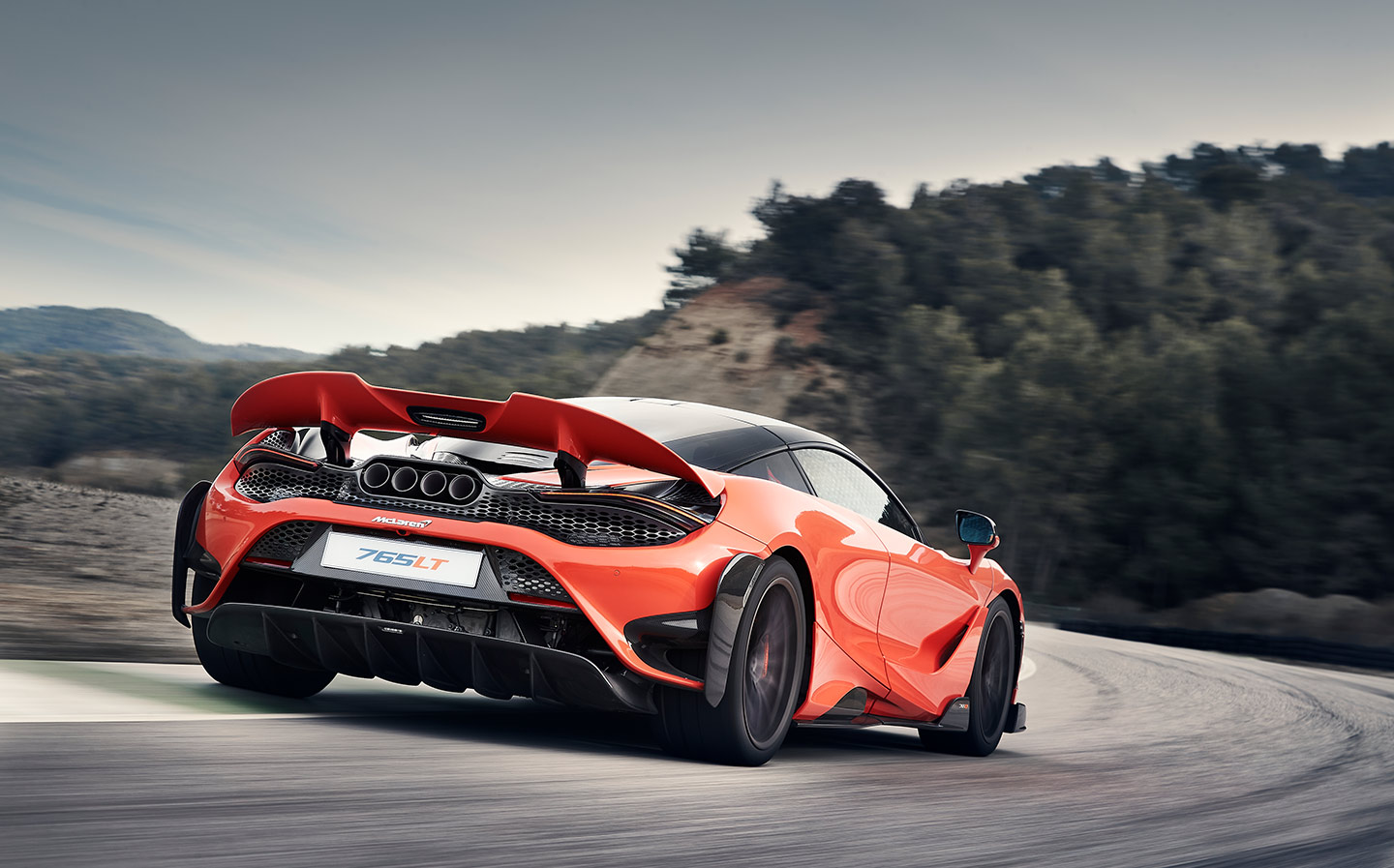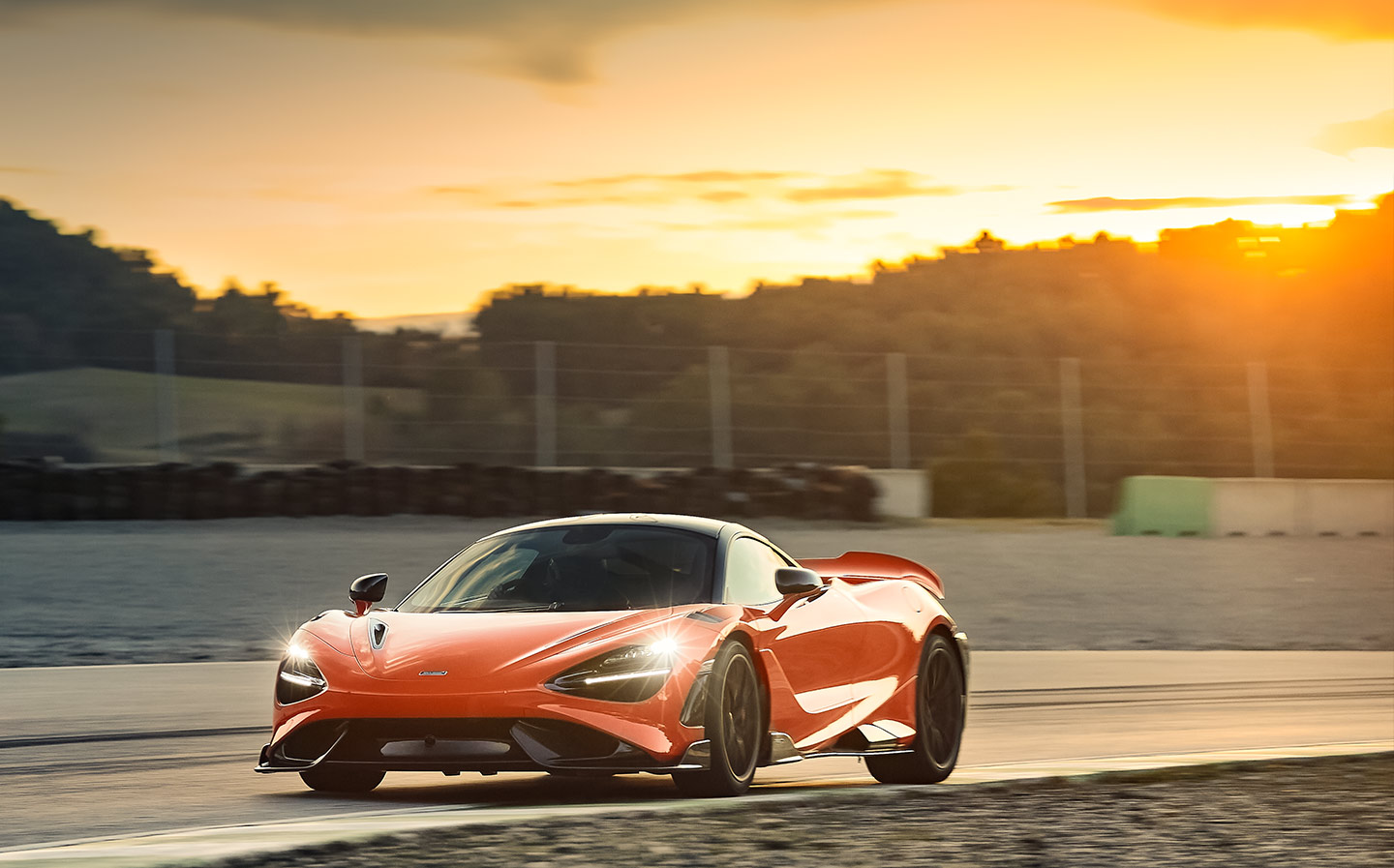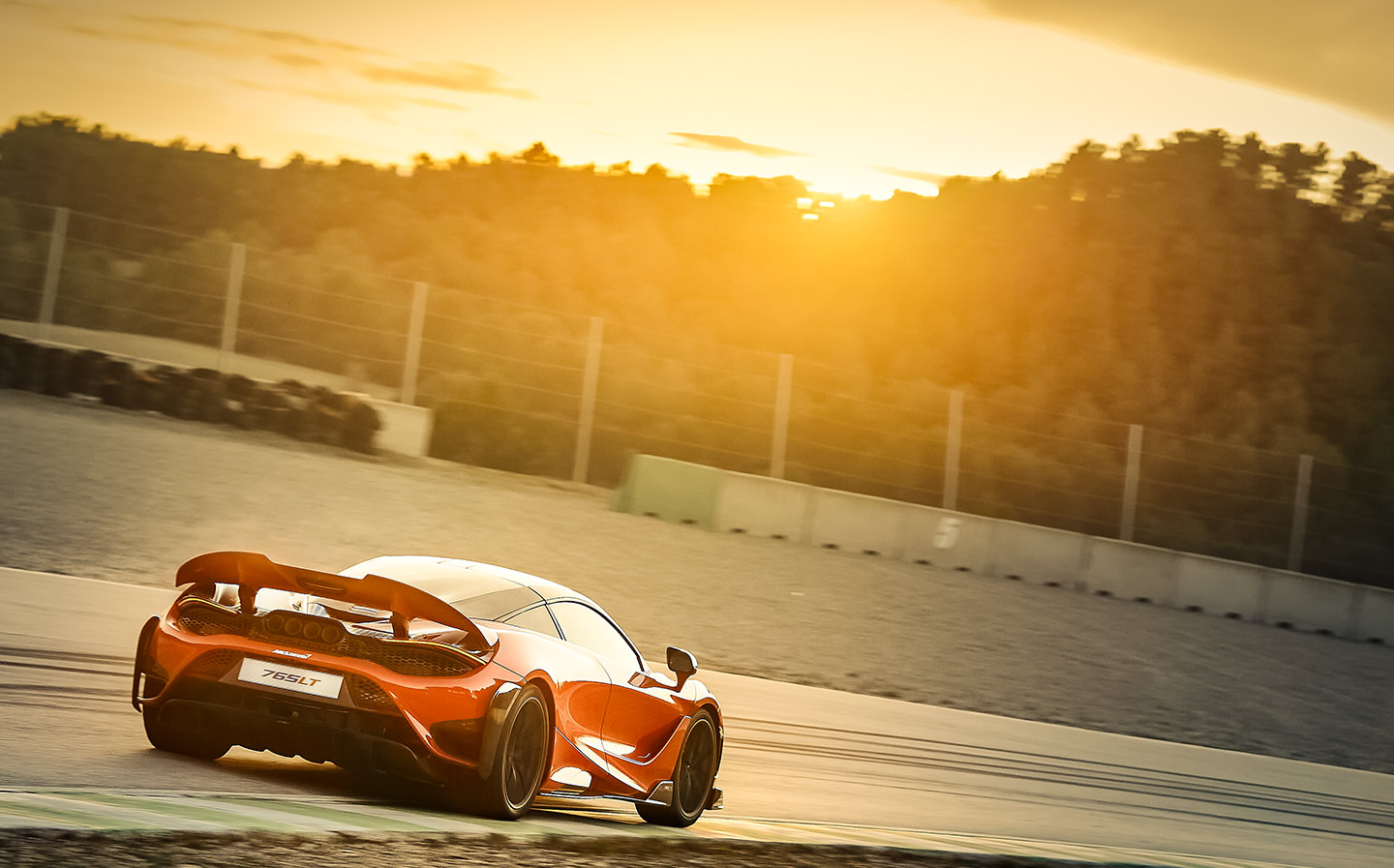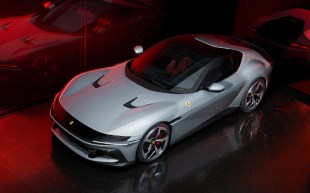McLaren 765LT unleashes 720S potential, has the Ferrari 488 Pista licked
'Seconds quicker' round a track than 720S
MCLAREN has unveiled the new range-topper in its Super Series — the Ferrari 488 Pista-rivalling McLaren 765LT.
Essentially a version of the 720S supercar turned up to 11, the new Mclaren 765LT continues the company’s longtail lineage that began with the F1 GTR in 1997 and keeps the same fundamental philosophy: more power, less weight, a focus on track performance and limited production.
Hundreds of engineering changes have been made to the 720S in its transition to 765LT, we’re told. The 765LT is up to 80kg lighter, at 1,339kg (DIN), thanks to weight savings anywhere they could be found. Topping the list was the wheels (22kg) followed by the Senna-based racing seats (16kg).
McLaren also made use of carbon fibre body panels — the first manufactured at the new McLaren Composities Technology Centre in Sheffield. The rear fender, bonnet, front fender and doors are aluminium as standard but can be optioned with carbon versions. Air-conditioning and a stereo system are deleted as standard to minimise weight, but can be specified at no additional cost.
The Woking-based car maker also fitted a bespoke titanium exhaust, and the windows are thinner, too. The rear panel is made from race-bred polycarbonate, in fact.
The heart of the car is the 4-litre twin-turbocharged V8 engine, which has been boosted from 710bhp to 755bhp (or 765PS, hence the name) and features bespoke forged aluminium pistons, a three-layer head gasket used in the Senna and ultra-efficient carbon-coated elements, so we’re told.
The vital stats? The 765LT can hit 60mph from standstill in 2.7 seconds (0-62mph in 2.8 seconds) but as ever with McLaren, it’s the 0–124mph time they want to shout about: 7.2 seconds, since you’re asking. That’s nearly a second quicker than the 488 Pista (8.1sec), over a second more rapid than a Porsche 911 GT2 RS (8.3sec) and blitzes the Lamborghini Avnentador SVJ (8.7sec). The McLaren’s top speed is a cool 205mph.
Power is fed through a seven-speed sequential gearbox but tuned for 15% quicker in-gear acceleration. McLaren has also added a system that will recognise when a manual downshift would over-rev the engine, and shifts down when engine speed drops to a safe level. On the 720S an early downshift is simply overridden.
In the past, some McLarens’ engine notes have been criticised for offering less drama than rivals so a lot of work went into tuning bespoke titanium exhaust for a more engaging sound, while the quad pipes add visual drama.
The whole car is impressive to look at but that rear end is especially impactful. At a secret pre-Geneva launch in London last month, chief designer Rob Melville encouraged us to examine the rear of the 765LT in particular. It’s his favourite part of the car, he said, thanks to the laser-cut rear mesh, quad exhaust, enlarged diffuser and general tightening-up of the lines. Melville says he was inspired by the Le Mans racers with “fluid panels but also detailed, technical sections”.
The massive active rear wing aids cooling and improves downforce in its raised position but can also work as an airbrake when slowing fast from high speed. A “DRS” position will automatically set it to reduce drag when accelerating hard in a straight line.
The rear wing, extended front splitter, carbon fibre floor, unique door blades and the extended rear diffuser (this is a longtail, after all) help deliver aerodynamic downforce 25% greater than that of a 720S, McLaren claims.
The 765LT is also 6mm wider between the front wheels, has a 5mm lower front ride-height and a unique software programme for the hydraulic active suspension. New lightweight springs feature additional ‘helper’ springs to reduce unsprung mass and maintain load in the suspension on full rebound, while the use of two springs saves weight in comparison with one larger dual-rate spring. Roll stiffness is increased, further enhancing vehicle stability.
What else? Gearbox and suspension characteristics can be adjusted by cycling through the Comfort, Sport and Track driving modes. Stopping power comes from carbon-ceramic discs, calipers borrowed from the McLaren Senna and “Formula 1-inspired, integrated caliper cooling ducts”, while it rides on P-Zero tyres developed in conjunction with Pirelli.
The engineering tweaks make it more “user friendly” in some ways, it was claimed, with more linear engine and chassis control, reducing snap oversteer and understeer. But it’s also “edgier” than the 720S in other ways, exemplified by the fact that “creep mode” has been removed — if the driver wants the car to move forward they have to press the accelerator, not just lift off the brake.
What’s it like round a track? We’ll have to wait to try it but we know that 1998 Indy Racing League champion and 1999 Indianapolis 500 winner Kenny Brack was the chief test driver, so it ought to all work rather effectively. McLaren claims it’s “seconds quicker” than a 720S, and “closer to the Senna in terms of performance”.
As ever with a McLaren LT, production is limited — to 765, as it happens — so get in there quick. Deliveries are due to begin in September. The price? £275,000-280,000 is about the mark, we’re told, though if you have to ask…
And yes, a Spider version will arrive eventually, though that’s probably a year away.
McLaren’s Longtail lineage
1997 F1 GTR Longtail The legend. McLaren had to homologate three of these for the road to satisfy sports car racing regulations. It weighed 940kg, 70kg lighter than the “standard” F1 road car, and still featured the legendary 6.1-litre BMW V12 engine, tuned to 620bhp.
2016 675LT Now a “legacy” car for McLaren, it was based on the 650S Super Series model and packed a 3.8-litre engine with a maximum output of 666bhp. A 675LT Spider was also put on sale.
2019 600LT Still on sale, this hardcore version of the Sports Series’s 570S also features McLaren’s twin-turbocharged 3.8-litre V8 but tuned to 591bhp. A 600LT Spider is also now on sale.
2020 765LT That thing ☝️


